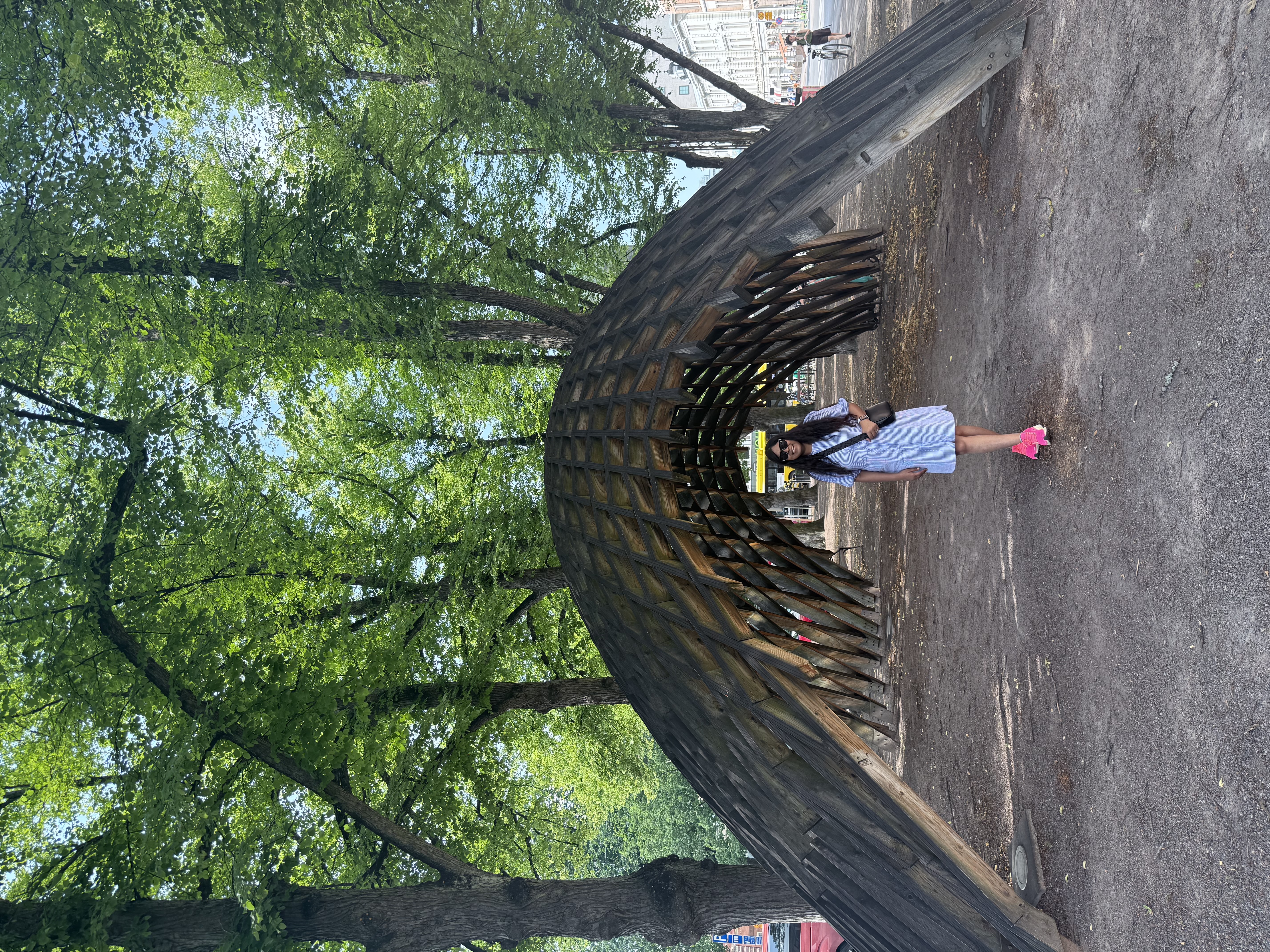
A day trip to Turku
Hello from my home in Matinkylä! This is NordLetter #63, a weekly newsletter on living and walking in Finland. Each week I share some of the interesting things I found on the web.
To follow the series, you can subscribe here. A new NordLetter will land in your inbox every Sunday. Not a fan of newsletters? No problem! You can read previous editions here. You can also subscribe to the RSS feed.
You can reach out to me by replying on this mail or adding a comment on this. I am also posting on Mastodon.
We went to Turku last week. It was not something that we were supposed to do, but ended up doing anyway because it was sunny in the morning. It was supposed to be, so not a surprise in any way. But around 5-6 there were chances that we would get rain. That was why the trip was not a done thing.
The drive from home to Turku is around 1.5 hours. We went there in one go without any stops, and while coming back, we took a stop at a Neste stop around midway through the journey.
Turku is the oldest city in Finland. It was founded around 13th century and was the capital of Finland until 1812, when Helsinki took its place. The great fire of Turku in 1827 was the largest urban fire in the history of Finland and left 1/4th of the city unscathed.
Turku reminded me of Paris, of people sitting on benches around the Seine. They would wave at us as we went away on our boat. There were no waving people here, but there were people on both sides of the Aura river. It’s not that people don’t sit on benches around rivers in Helsinki. They do, I have been one of those people on Töölö. But Töölö is a lake. And a lake is not a river.
We parked the car in the bay area. We walked a bit, looking for a park to sit in and have lunch. This was the main reason we were here after all. We did not find a park, what we found instead were two adjacent benches on the side of the river.
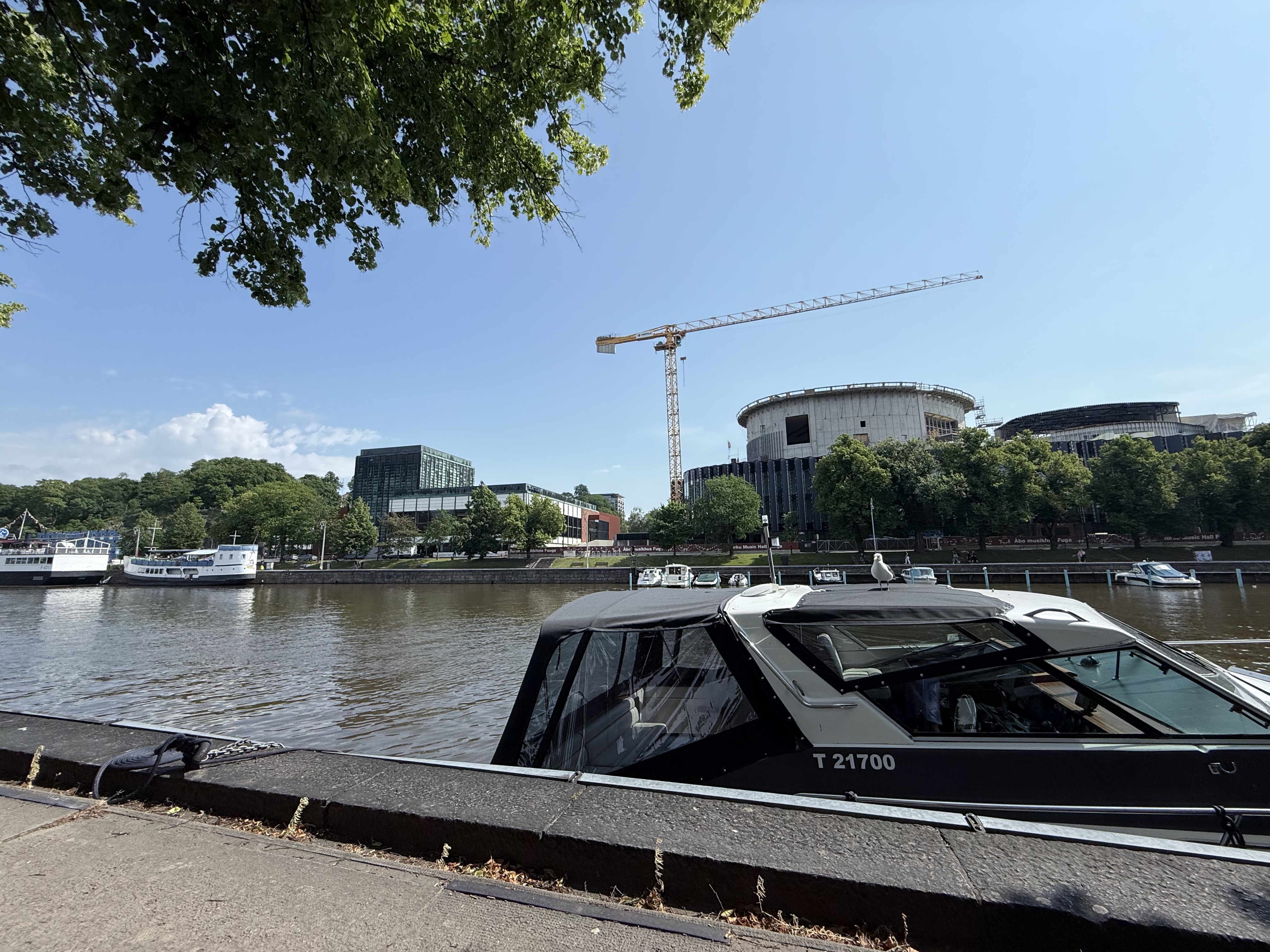
We ate vada-pav, paratha and pulao. It was delicious.
The Aura has many bridges on it. We took pictures on the first bridge we crossed.

After leaving the bridge, we had ice cream. I had my favourite mango, Prerna had strawberry, and Savya had both.
Then we walked to the cathedral which was around a kilometre from where we were and so we walked and walked and walked.


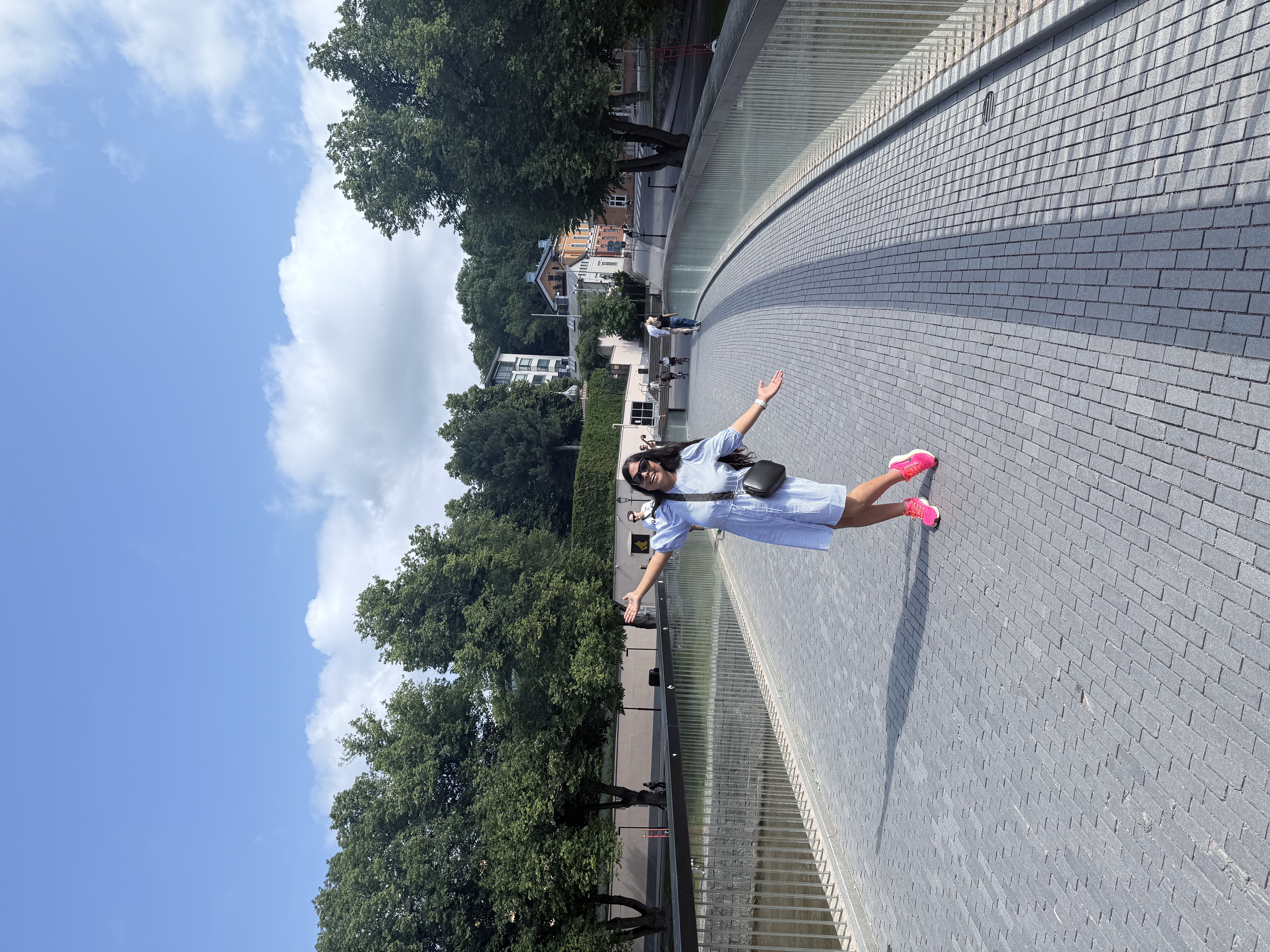

Finally, we reached the cathedral.
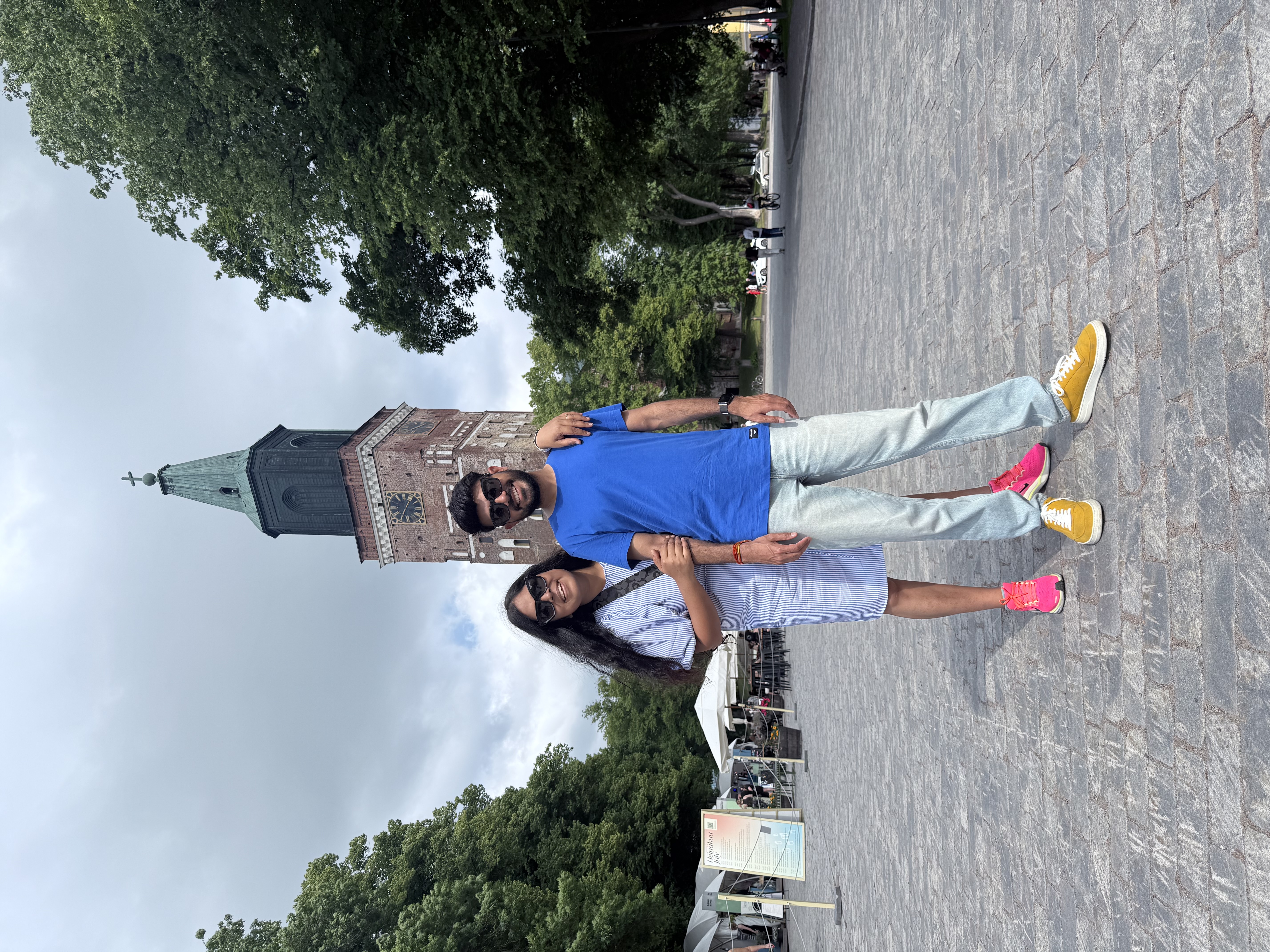
Turu Cathedral is the only medieval basilica in Finland. It is the seat of the Lutheran Archbishop of Finland. Whenever I am at places like these, I always wonder how people would have interacted with and used this building in the olden times, when this was more than a monument. I try to imagine their lives. How it would feel standing in this building, praying in it.
I did a similar thing when I was in Bihar and saw the Ashok Pillars and museum. I was wondering how people would have lived and how this would have looked in Ashoka’s time. There was a helpful little illustration which showed you from the view of the huts you could see the stupa in a distance.
I did the same thing here, in this massive cathedral.
We had been to the Tampere cathedral last year. It is a similarly grand cathedral, not as massive though. The stone on the walls of the Turku cathedral look like they are from a old time.
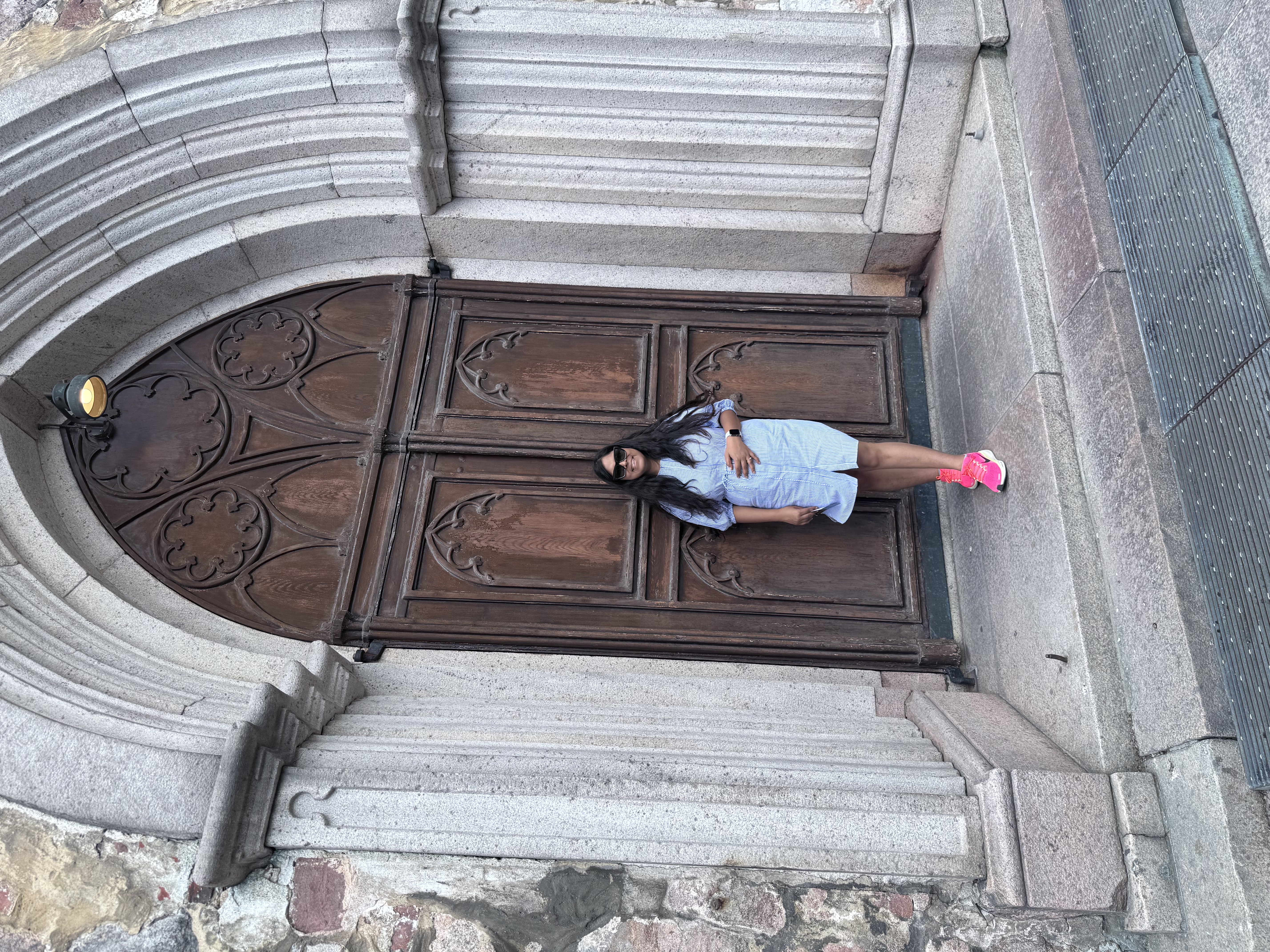
People in that day and age did not have to worry about accessibility, so we left Savya’s pram at the base and took him in our arms up the stair.
The cathedral is massive with high ceilings and beautiful frescoes on the walls. I walked to the end, past the rows upon rows of benches and then chairs. After I reached the end, I turned around to look at the entire place and wondered how it would feel for the bishop to speak to their parish. I was having a hard time imagining the entire thing full of people and the place being lit with candles.
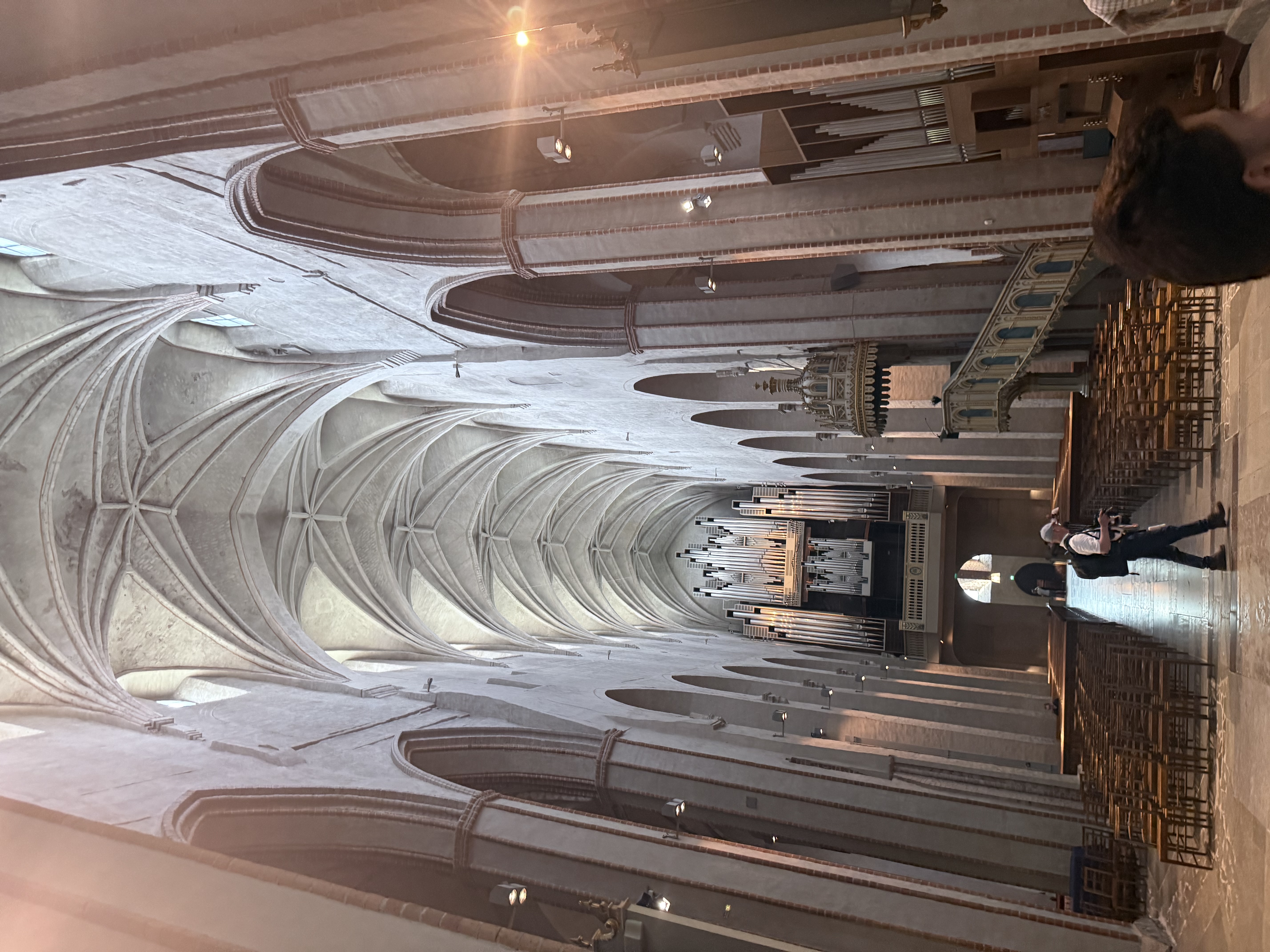
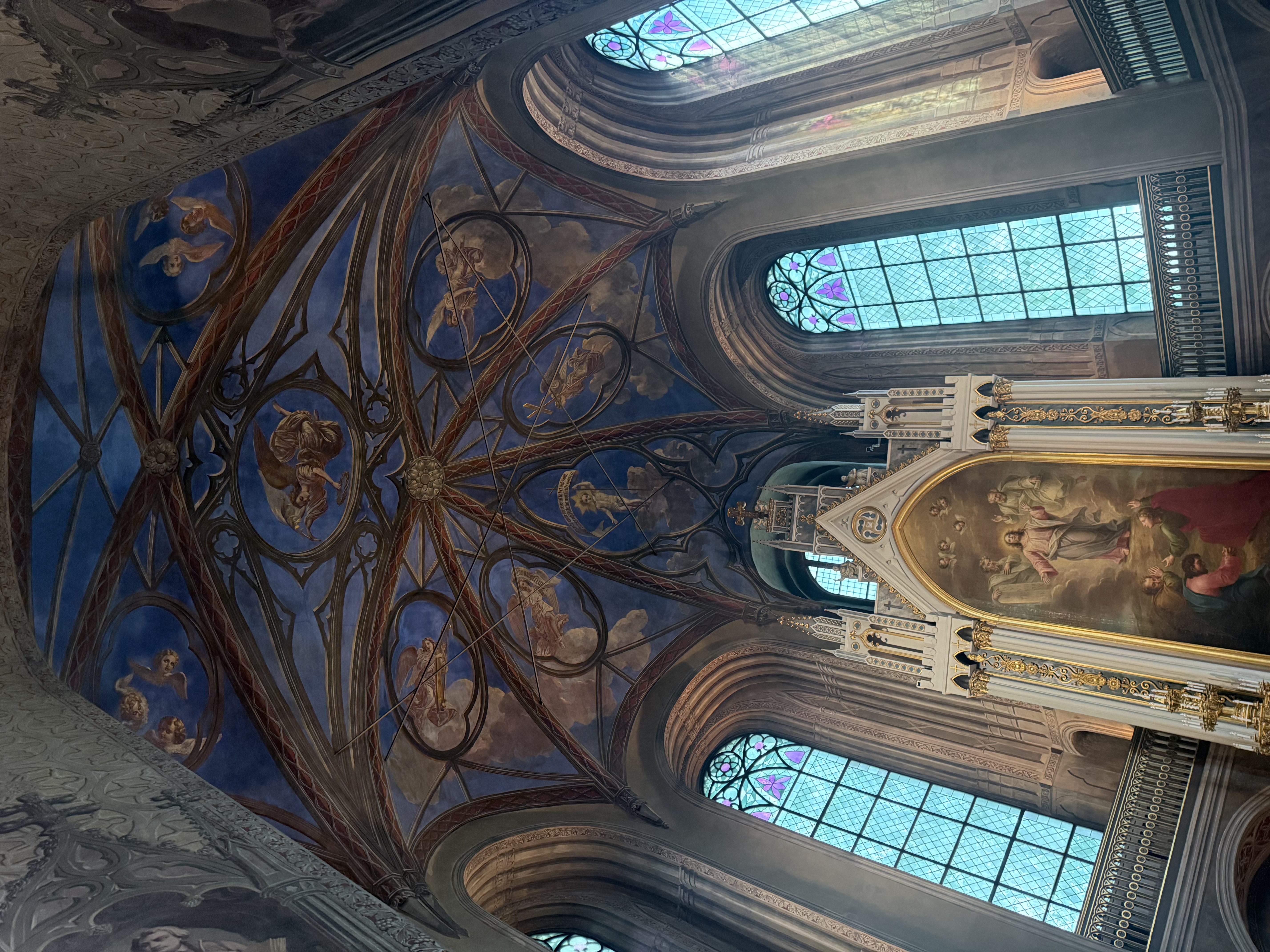
There was also a museum on the upper levels of the cathedral. We took a ticket and visited the museum. They had many artefacts there, including this coat of arms which I found charming.
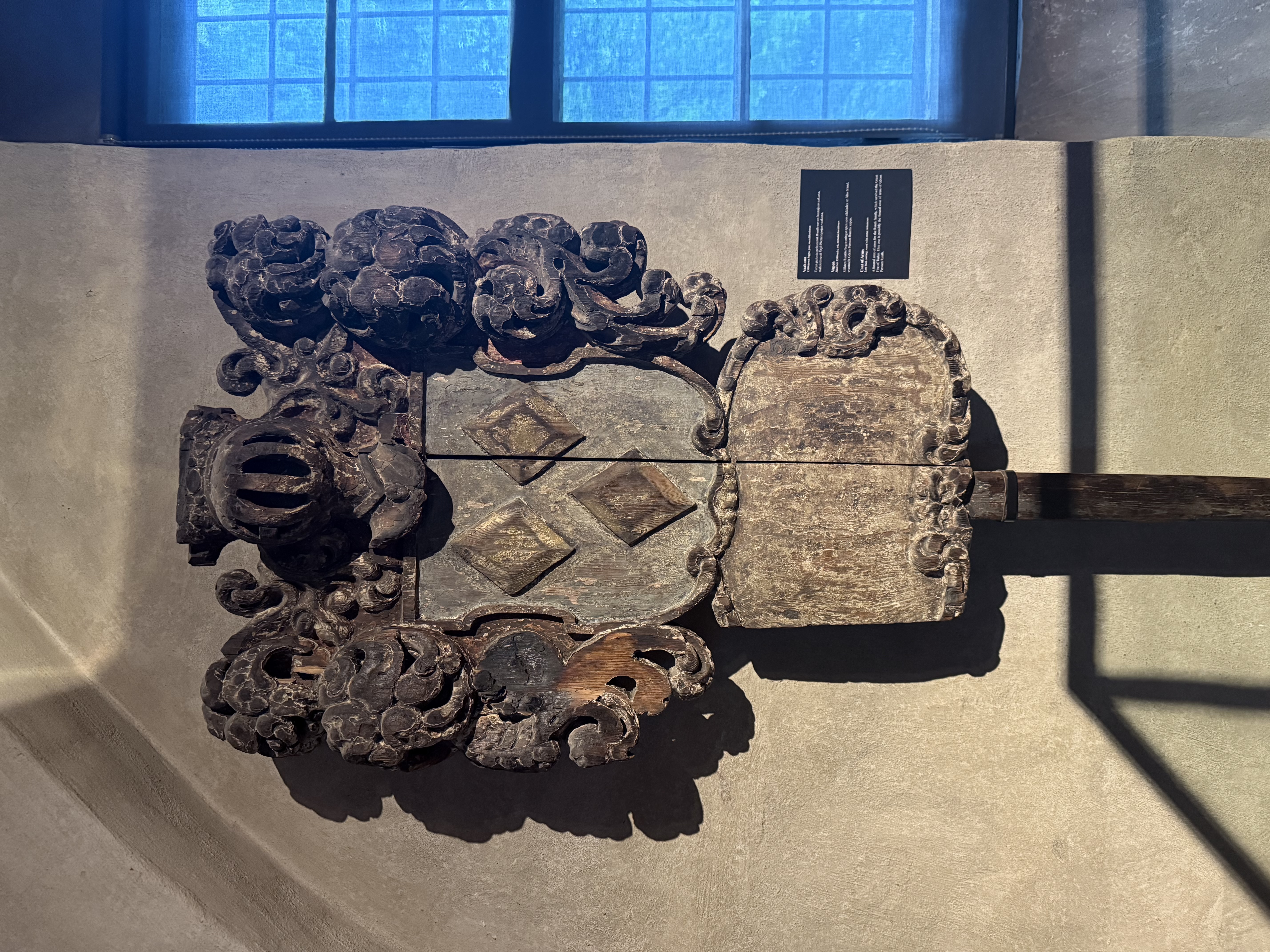
There was also the first bible published in Finland among other things.
Just outside the cathedral are many vendors. We ordered some fries, sat under an umbrella, talked and ate, while it rained a little bit.
After it stopped raining, we got up and walked back to our cars, which were a kilometre the other way. We drove back to our homes, stopping at a Neste on our way back. There was a kid’s section there. Savya enjoyed himself there, a lot. He was tired by the time we got back home, but as he does usually, he did not sleep.
Eventually, he did.
/five things to share
1. Tasks and projects
Art is a project. Connection, community building, counseling–all of these are projects. When our work is project-focused, we’re not a cog in a vast machine. Instead, we’re a contributor with agency, someone who is working with and for the agenda we’ve agreed to.
The Bad bosses try to have it both ways. They are stingy with agency, authority and compensation, and insatiable when it comes to effort. But smart leaders understand that given the chance, most of us would love the chance to be seen, to contribute and to be part of something.
2. Reflections on OpenAI
I have been reading so much news these days about Meta taking AI talent from OpenAI and other companies, it was fun to read this little tid-bit here:
When it comes to personnel (at least in eng), there’s a very significant Meta → OpenAI pipeline. In many ways, OpenAI resembles early Meta: a blockbuster consumer app, nascent infra, and a desire to move really quickly. Most of the infra talent I’ve seen brought over from Meta + Instagram has been quite strong.
There are other fun insights here as well. It’s seldom we get these types of look inside these companies.
How large models are trained (at a high-level). There’s a spectrum from “experimentation” to “engineering”. Most ideas start out as small-scale experiments. If the results look promising, they then get incorporated into a bigger run. Experimentation is as much about tweaking the core algorithms as it is tweaking the data mix and carefully studying the results. On the large end, doing a big run almost looks like giant distributed systems engineering. There will be weird edge cases and things you didn’t expect. It’s up to you to debug them.
Read this in full.
3. The Sputnik vs. Deep Seek Moment: The Answers - Marginal REVOLUTION
Zero sum thinking fuels support for trade protection: if other countries gain, we must be losing. It drives opposition to immigration: if immigrants benefit, natives must suffer. And it even helps explain hostility toward universities and the desire to cut science funding. For the zero-sum thinker, there’s no such thing as a public good or even a shared national interest—only “us” versus “them.” In this framework, funding top universities isn’t investing in cancer research; it’s enriching elites at everyone else’s expense. Any claim to broader benefit is seen as a smokescreen for redistributing status, power, and money to “them.”
If there is fixed growth, then, people would think that if someone else is growing that means they are growing at our expense.
4. Google’s curated AI ‘notebooks’ talk you through topics from parenting to Shakespeare
The featured notebooks include original text from the source material, whether it’s a book, play, newsletter, or online article. NotebookLM automatically summarizes this information and comes preloaded with notes about the topics discussed in the source material. You can also interact with NotebookLM’s AI chatbot to ask questions about the information, as well as listen to pregenerated Audio Overviews, the podcast-like discussions featuring AI “hosts.”
The NotebookLM product famously came from a Googler’s 20 % time. I have not used this product, but I have found myself spending more time with voice (speech-to-text and audiobooks ).
This seems like a good idea in that aspect.
This new announcement seems like a good idea too, a natural evolution of the product.
There maybe just a little glimpse of the future AI-fied world here too, with individual creators creating things for the chat bots.
5. Uber’s Robotaxi Is No Quick Delivery
We have not fully contextualized the impact of the gradual automation of our everyday life and how much it reduces economic activity. Waymo’s driverless profits flow mostly to its investors, employees, and eventually Google’s shareholders. The local economic impact is close to zero, barring a few taxes.
Humans buy coffee, gas, and stay in the city. They even pay taxes on their income. They support the local ecosystem. A self-driving car company has none of those inefficiencies. Good for profits, not so much for the local ecosystems. Others see Waymo’s success and want the profits, just as fast-food chains want robots flipping burgers.
This is something that I keep wondering myself. If AI/robots replace the human workers, where will the humans get the money to buy the food or service or whatever.
If you enjoyed reading this, and know someone else who might, please consider forwarding this to them. It would help this grow and make me happy. 😄
Until next week.